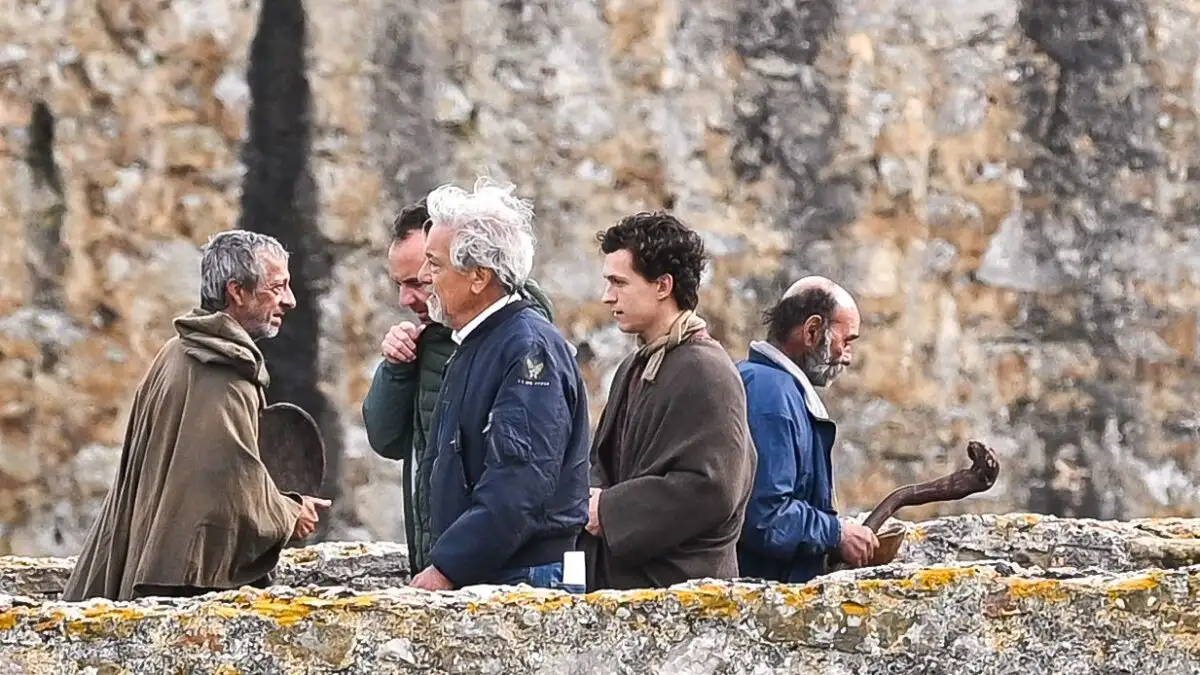Researchers say evidence shows Acolhuas, allies of a major Aztec city known to have captured a Spanish convoy in 1520, killed and cannibalised their captives
Aztecs under attack: Hernán Cortés, with 200 Spaniards and 5,000 Indians defeats a larger Aztec force in 1520. Photograph: Unknown/ Archivo Iconografico, S.A./CORBIS
Spanish conquistadors, women, children and horses were imprisoned for months, sacrificed and eaten by contemporaries of the Aztecs, archaeologists report after unveiling new research from ruins near Mexico City.
Although Spanish chroniclers including Hernán Cortés, who led the conquest of Mexico in 1520, recorded the capture of a convoy that year, archaeologists are for the first time uncovering details of what happened when a native people first encountered the Spanish, Mexico’s National Institute of Anthropology and History said in an announcement of its findings.
Only a few dozen miles from the relative safety of the Spanish army, the convoy of conquistadors and allies encountered a local people known as the Acolhuas, allies of Tetzcoco, a major Aztec city.
Somehow, the caravan – archaeologists estimate it included 15 Spaniards, 45 soldiers from the colonies, 50 women, 10 children and a large number of indigenous allies – was captured. Over the next six months, its members met a grisly end.
Traces of construction show that the Acolhuas had to remake Zultepec, a town just east of the capital, then called Tenochtitlan, to accommodate the prisoners, archaeologist Enrique Martinez said in a statement.
The town was eventually renamed from Zultepec to Tecoaque, which in the native Nahuatl language means: “The place where they ate them.”
The Acolhuas housed the prisoners in ad hoc cells, where archaeologists found the remains of the caravan members with signs that they had been sacrificed. Every few days, Martinez said, the priests chose someone to kill, sometimes in the town square, sometimes in their cell and within earshot of the others.
The archaeologists said the townspeople sacrificed people in honor of the serpentine fertility god Quetzalcoatl, the jaguar god Tezcatlipoca and the aquiline warrior god Huitzilopochtli.
“Different deities needed different sacrifices,” Rosemary Joyce, a professor of anthropology at the University of California, Berkeley, told the Guardian.
“It was traditional in the back and forth between the Aztecs [and contemporaries] to sacrifice people who were captured, specifically warriors.”
Women and children were also chosen, said Joyce, who was not involved in the excavations. “Children in particular were selected for rain deities.”
Clay figurines, some represented in European-looking garb, are among the 15,000 artifacts unearthed from the site. They likely played a role in rituals, Martinez told the Associated Press. “We have figurines of blacks, of Europeans, that were then intentionally decapitated.”
Lisa Overholtzer, a McGill University anthropologist who has studied similar figurines, expressed skepticism about the the artifacts, saying that despite their trappings “there is nothing that clearly indicates the individual is Spanish”.
But if the figurines are dated to 1520, she said, “it would represent perhaps the earliest appearance of this kind of figurine, in a period when racial categories were still in flux”.
One miniature sculpture resembles something not quite human, and instead has “an angel’s face on one side and a demon with goat horns on the other”, the researchers said.
Sacrifice was not the end for the victims. Skeletons show the marks of cuts consistent with flesh cleaved from bones, Martinez said, suggesting that the townspeople ate not just the horses but the caravan travelers as well.
Martinez could not be reached to describe evidence of cannibalism, however, and other archaeologists cautioned that such claims were sometimes founded in colonists’ accounts and not always supported by material evidence.
Some of the human remains were placed around the site, as on a bone rack of skulls that later greeted the avenging Spaniards sent by Cortés. In another case, inside the pelvis of a woman who was sacrificed and dismembered in a plaza, the Acolhuas placed the skull of a one-year-old child.
Only the pigs were spared the full treatment, apparently because they so baffled the native people.
“The pigs were sacrificed and hidden in a well, but there is no evidence they were cooked,” Martinez said.
When Cortés learned of the massacre he sent a force to destroy the town and the Acolhuas. Martinez said the ruins of Zultepec-Tecoaque suggest its inhabitants tried to quickly abandon and hide evidence of the sacrifices by tossing the Europeans’ belongings in certain rooms and in cisterns.
Archaeologists have found more than 200 objects, including a riding spur, a brooch, rings, iron nails and glazed ceramic figurines, in 11 cisterns around the site, and plan to explore three more in the coming months.
Cortés’ soldiers destroyed the town, but Acolhuas’ attempt to bury remnants of the sacrifices actually helped preserve the evidence for later archaeologists, Martinez noted.
The identification of indigenous allies in the Spanish caravan struck Overholtzer as a telling sign of the complex world into which the invaders marched.
“The Spanish were able to ultimately conquer the Aztec capital of Tenochtitlan not because of guns or steel,” she said, “but because of their fierce, skilled indigenous warrior allies.”
Martinez argued that the findings showed that indigenous people fought back against the conquistadors, in contrast to the popular story that Mesoamerican peoples ceded to the Spanish quickly.
But betrayal was a way of life as much in the Americas as in Europe in the 16th century, University of Florida archaeologist Susan Gillespie said, and: “Cortés learned of, and exploited, these political rifts to his advantage.”
By the time the conquistador laid a final siege on the Aztec capital, the Acolhuas had allied themselves with Spain.







